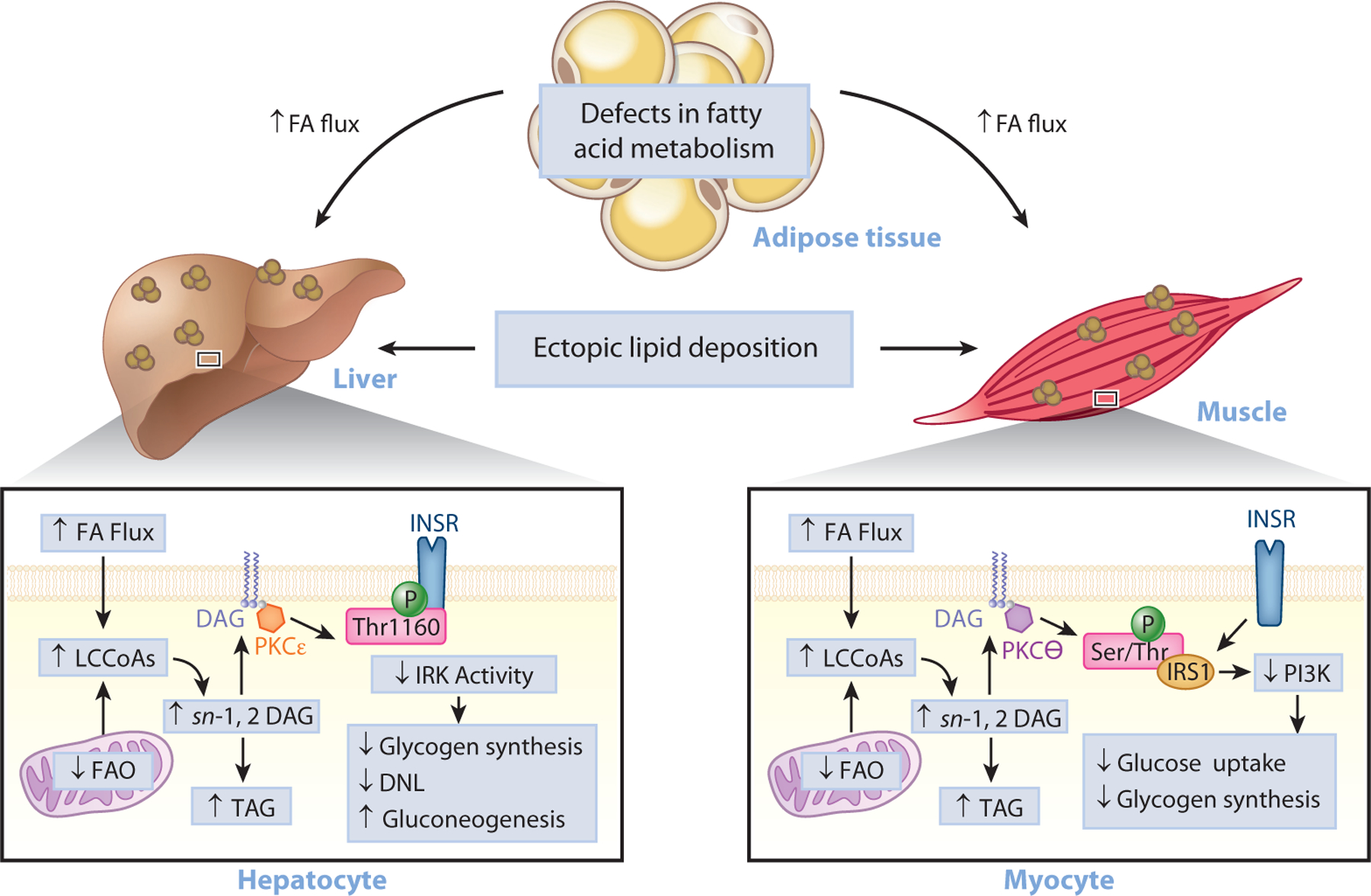Figure 2.

The role of ectopic lipids in insulin resistance. Under conditions of overnutrition or defective adipocyte fatty acid metabolism, lipids can be redistributed from eutopic sites (adipose tissue) to ectopic storage sites (liver and muscle) and lead to impaired insulin signaling, insulin resistance, and T2D. Lipid-induced hepatic insulin resistance may result from activation of the DAG–PKCε axis and the consequent inhibition of INSR signaling through inhibitory phosphorylation of INSR at Thr1160. This leads to impaired insulin stimulation of hepatic glycogen synthesis, impaired transcriptional upregulation of de novo lipogenic genes, and impaired transcriptional downregulation of gluconeogenic genes. Skeletal muscle insulin resistance, caused by increases in intramyocellular ectopic lipid, impairs insulin-stimulated glucose transport and glycogen synthesis through the activation of the DAG–PKCθ axis and the consequent inhibition of the PI3K pathway through inhibitory phosphorylation of IRS1. Abbreviations: DAG, diacylglycerol; FA, fatty acid; FAO, fatty acid oxidation; INSR, insulin receptor; IRK, insulin receptor kinase; IRS1, insulin receptor substrate 1; LCCoA, long-chain CoA; PI3K, phosphoinositide 3-kinase; PKC, protein kinase C; Ser/Thr, serine/threonine; T2D, type 2 diabetes; TAG, triglyceride; Thr1160, threonine 1160.
